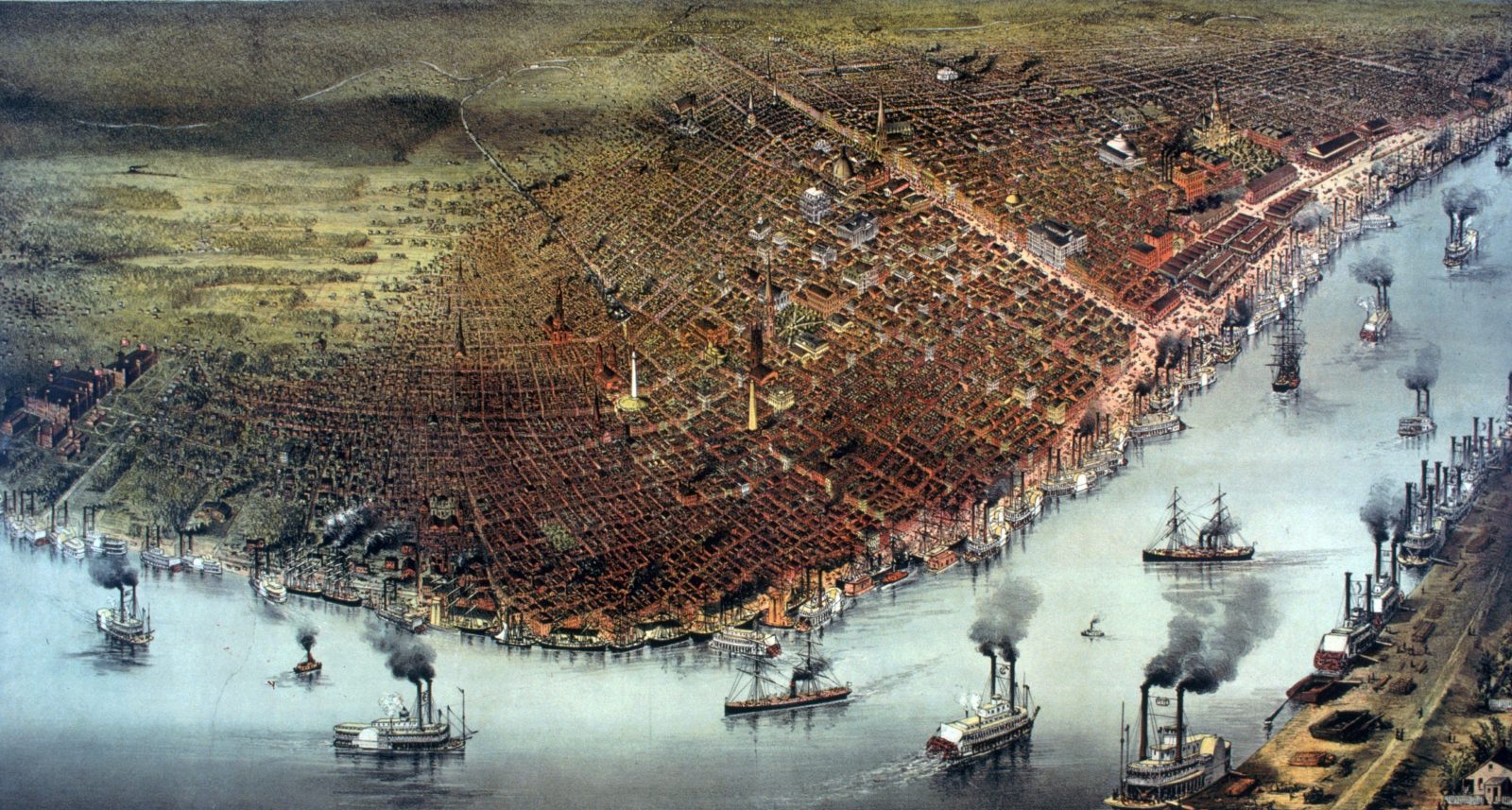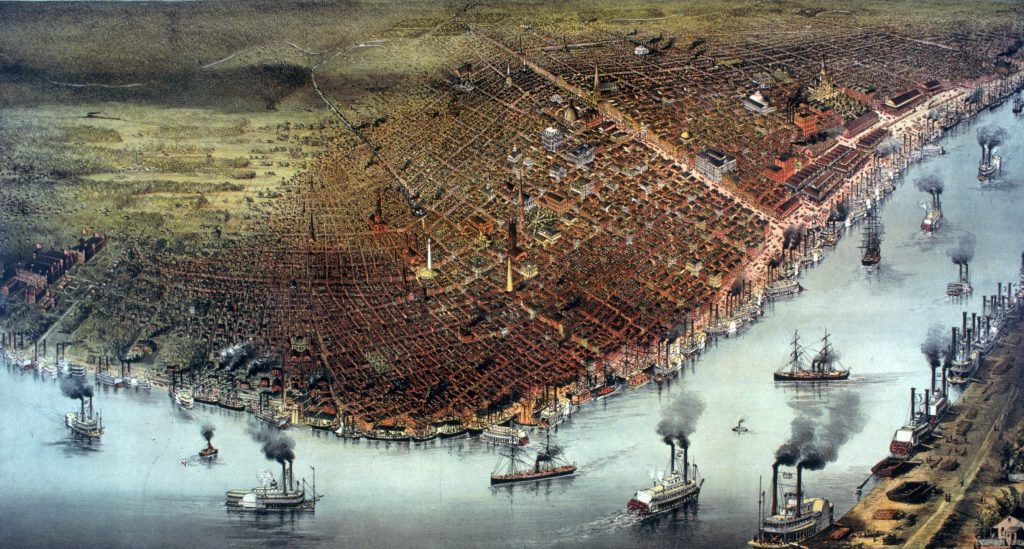United by Water


As we approach the 4th of July, 2022, Eric Herman offers a unique summation of our history and ongoing relationship with the world of water. As he points out, creating water infrastructure and technology stands among our society’s greatest achievements.
By Eric Herman
Have you ever noticed how most major cities are situated on large bodies of water? There are notable exceptions, of course, but there are countless examples where the presence of an ocean, harbor, bay, lake, river, sound, estuary, inland sea or a swamp defines the history and existence of our greatest cities. New York, NY exists because of its natural harbor and rivers, the same is true of San Francisco and its bay, New Orleans and the Mississippi River, Seattle and the Puget Sound, or Chicago and Lake Michigan, the list goes on and on, in America and around the globe.
For a variety of obvious reasons, humans settle by the water’s edge and have done so around the globe throughout history. The need to access, contain and distribute water was one of the nascent organizing forces driving the creation of the very earliest ancient societies in Mesopotamia and China. As true, the ingenuity applied to those same needs is one of the defining features of the most successful societies of the modern world.
Ours is truly a world shaped by water.
The United States of America, has been no exception and, in fact, stands as an epic example of what I call, “societal watershaping.” I personally believe that the control of water for transportation, irrigation, power generation, drinking and sanitation is collectively one of our greatest national achievements and in the broader sense, of all human achievements.
In North America, starting with the construction of the Erie Canal, which fueled westward expansion and economic integration, our nation has created water infrastructure that has literally shaped our society and transformed our way of living.
The list is breathtaking. The early public water and sewage utilities of the Industrial Revolution enabled explosive growth of cities across the country. We’ve harnessed the movement of water in canals and aqueducts to drive commerce, industry and agriculture. We have turned deserts into verdant valleys and rivers into highways. We have constant access to potable water and the biological health of modern waste water treatment.
The list of infrastructure achievements encompasses a very proud national history, indeed.
DARK WATERS
There is, however, an attendant dark side to this narrative that is equally part of our national experience. The abuses to natural bodies of water and the ecosystems they support, in the form of pollution and destruction of natural habitats, were once rampant in places like the Great Lakes and countless river systems. Unchecked through the first half of the 20th century, industry and agriculture literally set a river on fire and nearly drove our national bird to extinction. Runoff and river effluent containing pesticides and pollutants have wrought catastrophic damage in our oceans, while contamination of ground water has caused disease and death over and over again.
Passage of the Clean Water Act in 1972 did turn the tide and, in many cases, the damage has been mitigated and biodiversity at least partly restored. Those environmental victories also stand as shining accomplishments. But challenges remain in the form of microplastic contamination of the ocean and terrestrial water systems and the continued pollution of fresh and saltwater. Ocean acidification and the formation of enormous dead zones at the mouths of major rivers remain huge issues, as is the die-off of coral reefs and overfishing.
It is painfully apparent that as a society we must do a far better job caring for our natural waters and the ecosystems they support. I’ve always thought that polluting our water, and air, is akin to dumping waste into a life-support system on a spacecraft. We soil and destroy the very systems and resources we utterly depend on for our existence. That’s a tragically bad habit.
Of course, mitigating environmental pollution is only part of the story. Today we are also challenged by the constant presence of drought. Whether you believe it’s the result of climate change, or not, there can be no question that in the western half of the country, and elsewhere, supplies of freshwater have dwindled to historic levels. Without going too far down that drain pipe here, I personally contend that so long as we rely on precipitation and ground water to water our fields, run our factories and quench society, we are increasingly vulnerable to what could be life-altering shortages.
Perhaps this is where we should focus that great American spirit of invention to ensure a water-secure future?
Yes, we are united by water on the most practical and necessary levels, and in the most precious and emotional ways, as well. We all know our world today is filled with many stressors with water-resource issues and environmental issues among many other anxious concerns. Inflation, political division, war abroad, racial strife, and the lingering effects of the pandemic . . . it all adds up to a storm of worry and uncertainty.
Perhaps it’s a cliché nowadays, but it is true that time spent in the presence of water, wherever you find it and however you choose to interact with it, has the power to heal, and inspire. We all know how beautiful and valuable a treasure our world of water truly is and the need to care for it really shouldn’t be a point of contention.
We are, after all, truly a people united by water.
Image courtesy of the Everett Collection | Shutterstock










